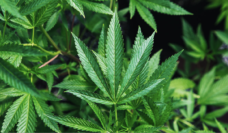In 2018, 16% of people 18 and older said they had used marijuana in the past year, a 1% increase from 2017. Responding to steady usage and increasing public acceptability, 11 states have legalized recreational marijuana. Legalization is occurring in the context of several decades of increasing concentrations of the psychoactive ingredient tetrahydrocannabinol (THC). Many marijuana leaf products now contain between 15-17% THC (15-17 mg./g.), while other, more concentrated products, like oils or vapes, contain up to 90% THC. The wide range in concentrations, without clear presentation to users, is a potential challenge to safe and informed marijuana usage.
Marijuana overdose isn’t lethal, but overdose has been found to lead to cognitive and physical impairment, extreme sedation, anxiety, and, if a product has particularly high THC, psychotic symptoms, like hallucinations. As many as 65% of marijuana users report having taken too much marijuana and experiencing some combination of these symptoms. Other research has linked the rising concentrations of THC products to rises in marijuana-related visits to emergency rooms.
Adding to these challenges is the lack of uniformity between states’ marijuana standardizations. In Alaska, Massachusetts, and Oregon, 5 mg. is a “standard serving” of THC, regardless of the concentration of THC in the product. In California, Colorado, Nevada, Washington, and Canada, 10 mg. is a “standard serving.”
Research has shown people often misunderstand standard food nutritional labels because of confusion about serving sizes; marijuana labeling is analogous. The difference between the two are the consequences of misunderstanding.
Recognizing this potential confusion, Canadian researchers tested young consumers’ ability to tell the concentration and strength of marijuana in a product based on its labeling.
Simple labeling methods, such as pictures of traffic lights designating “low, medium, and high” concentration levels, are far more effective at communicating doses or concentrations than technical language. For example, in one test, participants correctly identified a low dose (5 mg.) marijuana leaf product as “low THC” 85% of the time when it was labeled with a green traffic light. When labels saying “5%” were used, only 35% of respondents correctly selected the product as “low THC.” When labels saying “5 mg.” were used, only 28% of respondents answered correctly. Survey respondents found it difficult to accurately interpret marijuana strength using numbers on labels.
Research has shown people often misunderstand standard food nutritional labels because of confusion about serving sizes; marijuana labeling is analogous. The difference between the two is the consequence of misunderstanding. To avoid marijuana misuse, the researchers urge governments to consider standardizing descriptions of marijuana potency on products for sale by using simple symbols.
Photo via Getty Images














